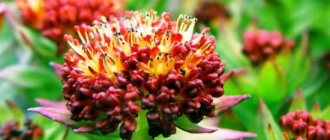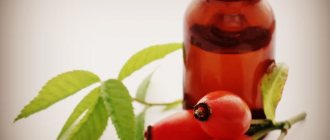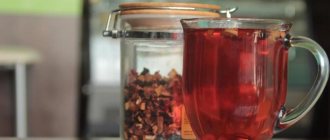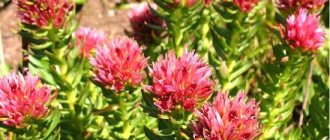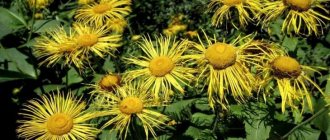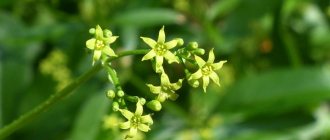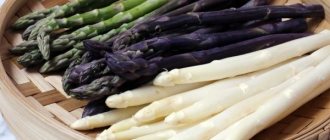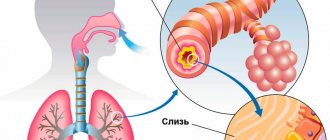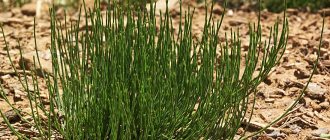Uses of licorice
Licorice is recognized as official medicine, and today a large number of different drugs with different spectrums of action have been created on its basis. Licorice substances have versatile biological activity, their anti-inflammatory properties are similar to cortisone. Thanks to glycyrrhizic and glycyrrhetic acids, it has become possible to use licorice for Addison's disease and metabolic disorders in the body.
Derivatives of glycyrrhizic acid affect inflammatory processes in a similar way to Butadione: they reduce cyclic changes in the endometrium. The most important pharmacological property is the stimulating effect of glycyrrhizic acid, which promotes rapid recovery from gastric and duodenal ulcers. This same acid gives licorice its sweet taste, which is why it can be used as a food sweetener for diabetics. And it is the presence of glycyrrhizic acid that allows you to take licorice for poisoning, infectious diseases, and manifestations of intoxication. This is an excellent detoxifying agent that neutralizes the toxic effects of chemical drugs.
Licorice syrup
Licorice syrup has the same excellent medicinal properties as the root. It has antispasmodic and anti-inflammatory effects, accelerates the healing of ulcers, and exhibits antimicrobial activity against staphylococci.
Licorice root syrup will be very useful for children, it is a very soft and pleasant-tasting liquid, kids drink it with pleasure. The syrup can be prepared at home.
Licorice syrup recipe: 4 grams of thick licorice root extract must be mixed with 80 grams of sugar syrup, add 10 grams of alcohol. Store the product in a tightly closed container in the refrigerator. The syrup is used for coughs, colds, tracheitis, hyperacid gastritis, and peptic ulcers.
How to take the syrup? Dosage: 5–10 ml of syrup with 200 ml of water or tea 2–3 times a day after meals.
Medicinal properties
Licorice root has many beneficial properties:
- Anti-inflammatory;
- Antiviral;
- Antipyretic;
- Expectorants;
- Laxatives;
- Diuretics;
- Antioxidant;
- Antitumor;
- Anti-aging;
- Enveloping;
- Wound healing;
- Antispasmodic;
- Detoxifying.
Ancient Chinese healers believed that licorice root prolongs life, preserves youth and beauty, and increases the body's resistance to various diseases.
The beneficial properties of licorice root are equated to the properties of ginseng. It strengthens the immune system, corrects the endocrine system, reduces cholesterol levels in the blood, and stimulates the secretory function of the glands.
Licorice for children
In pediatrics, licorice is used as a syrup; it can be drunk for dry and wet coughs; some gastrointestinal diseases in children are also an indication for taking licorice. All the beneficial properties of the syrup are determined by the composition of licorice rhizomes: it exhibits anti-inflammatory, antimicrobial, and analgesic effects. Licorice syrup is a natural product that promotes the secretion and removal of mucus, heals the mucous membrane and improves immunity. The course of treatment with syrup cannot last more than 10 days; it can only be extended after consultation with the attending physician. During treatment with syrup, side effects may occur: rash, itching, swelling, inflammation of the skin, diarrhea. In these cases, treatment should be stopped.
Adverse reactions and overdose
Licorice syrup can cause:
- allergic reactions due to intolerance to one of the constituent ingredients;
- a sharp increase in blood pressure, a decrease in the amount of potassium and an increase in the amount of sodium, swelling - when used for more than 1.5 months or a strong increase in the recommended dose;
- diarrhea, myopathy, myoglobinuria.
If unusual reactions occur, the patient should contact the attending physician for a consultation.
Accidentally exceeding recommended doses leads to:
- to potassium deficiency;
- increased blood pressure;
- changes in heart rate;
- brain damage due to high blood pressure.
The appearance of overdose symptoms requires seeking medical help and symptomatic therapy.
Liquorice root
Licorice root regulates water-salt metabolism. It contains an adaptogen - a substance that can increase the body's resistance to oxygen deficiency and has a positive effect on the hormonal system.
Also, as a result of research, high estrogenic activity of the plant was discovered. Foaming saponins increase the secretory function of the epithelium of the respiratory organs; under their influence, mucus liquefies and breathing becomes easier during colds.
Licorice has antiviral and antipyretic effects. Bioflavonoids have an antispasmodic effect on the smooth muscles of the urinary tract, bile ducts and intestines, and inhibit the secretion of gastric juice. Also, flavonoid compounds strengthen blood vessels, normalizing their permeability.
The sodium salt of glycyrrhetinic acid inhibits the activity of protozoan worms. The use of licorice is mentioned in manuscripts with recipes left to descendants by eastern doctors. Since ancient times, the plant has been used for diseases of the lungs and upper respiratory tract.
The popularity of the root, used in medicinal preparations for acute and chronic bronchitis, pneumonia, asthma, is caused by the high effectiveness of treatment, which has been proven by centuries-old practice. It is useful to take licorice-based products for lupus erythematosus, chronic skin diseases, allergies, pemphigus, eczema, neurodermatitis and allergic dermatitis. When treating the skin, they resort to the external use of decoctions and infusions of licorice. Consumption of the plant root is recommended for kidney pathologies. The effect of treatment will come faster if you apply complex treatment, which will include the collection of some other herbs, for example, birch, knotweed, and horsetail.
Licorice root is prescribed for pyelonephritis, inflammation of the bladder, urolithiasis and for the prevention of these and many other diseases.
A decoction of licorice roots helps with chronic fatigue, rapid fatigue, restores the functioning of the nervous system, and normalizes sleep. A decoction of the roots of the plant, prepared with milk, is useful for children with whooping cough. For dry throat, laryngitis, and pharyngitis, the root should be chewed.
Licorice root is an incredibly effective remedy for protecting and restoring liver function. There is a lot of evidence that the miracle root can reduce the likelihood of cirrhosis and liver cancer, reduce the concentration of transaminase enzymes (their elevated levels in the blood indicate damage to the organ).
Ancient Chinese doctors claimed that licorice root preserves beauty and youth, prolongs life, and increases the body's resistance to disease. It is recommended for use by older people, equating its properties to ginseng. It significantly reduces the amount of cholesterol in the blood, corrects the endocrine system, stimulating the secretory function of the glands, and also strengthens the immune system, tones, and exhibits antidepressant properties. Proper use of licorice root will definitely lead to positive treatment results.
How to take licorice root? When using the root of the plant as a medicinal raw material, it is necessary to follow the recommendations of traditional healers and doctors. It must be remembered that it should not be taken in combination with medications for heart failure, drugs that lower blood pressure and have a diuretic effect: arrhythmia, myopathy and muscle atrophy may occur. It is important not to exceed the dosage. Typically, adults are prescribed decoctions of 1-2 tablespoons 3-4 times a day before meals.
Licorice root for children in the form of a decoction is prescribed 1 teaspoon or dessert spoon, depending on age. Infusions are recommended for adults to consume 1/3 cup, for children - 1 or 2 dessert spoons 30 minutes before meals. The medication is taken warm, the number of doses is determined by the severity of the disease.
Precautions from the instructions
The annotation for licorice syrup contains the following recommendations:
- if the condition worsens or there is no effect of therapy, a doctor’s consultation is necessary;
- to avoid the development of adverse reactions, the drug should not be combined with other products containing licorice;
- for chronic or acute diarrhea, the medicine is taken with caution;
- the medication contains 8% ethanol, which is contraindicated for persons with alcohol dependence;
- Before use, the syrup must be shaken - during storage, sediment will form in it.
Due to the alcohol content, patients undergoing treatment should refrain from driving or operating complex moving machinery.
Cough licorice
A cough appears when, due to a cold or smoking, the bronchi require getting rid of phlegm. If it is difficult to separate it during a dry cough, they resort to the help of licorice, which enhances the inflammatory process, stimulates the body's defenses, the dry cough turns into a productive form, and a quick recovery occurs. The plant has a good effect on the healing process of bronchopulmonary diseases: the volume of mucus increases, microbes are removed from the lungs. Licorice is useful to use both at the onset of the disease and in advanced forms of pneumonia and damage to the upper respiratory tract. This is a very strong and positively acting remedy for tuberculosis patients.
There is an old recipe for a debilitating and dry cough; to prepare it you will need a mixture consisting additionally of marshmallow and elecampane. Cough licorice root is the main ingredient of the drug.
Cough infusion: you need to mix 1 tablespoon of crushed roots, pour 2 teaspoons of this mixture into 400 ml of cold boiled water, leave for 8 hours and take 100 ml 2 times a day before meals.
Benefits for women
Doctor says
Anastasia Mertsalova
The combined opinion of doctors on this issue
Licorice root in combination with therapy helps treat infertility, normalizes the cycle, restores the level of the hormone estrogen, which is especially important during menopause. Reduces pain on critical days.
Decoctions and infusions are useful for women throughout their lives, as well as during menopause.
During menopause, you can prepare a herbal decoction. To do this, pour half a liter of boiling water over the flowers of calendula, violet, elderberry, licorice root, and buckthorn bark, add 10 g of mallow and leave to brew for half an hour. The prepared decoction should be drunk during the day in 3 doses.
For amenorrhea, in a 1:1 ratio, take licorice root, St. John's wort, rue, juniper berries and pour a glass of boiling water. Brew and let it brew for half an hour. Drink a glass 2 times a day.
To normalize hormonal levels, pour 1 tablespoon of licorice root into a glass of boiling water and cook for half an hour. Then let it brew for half an hour. Take 30 minutes before meals from the 5th day before ovulation. After 3-4 weeks of use, you should take a break.
Licorice root is useful for older people to improve body tone and prolong the period of physical and mental activity.
Licorice extract
Licorice root extract is a thick brown mass with a peculiar odor and a sugary-sweet taste. This is the best remedy for caries, it is suitable for healing scars and treating dermatitis.
Glycerritic acid stimulates the production of interferon, an antiviral substance, which means that licorice treats herpes. It rejuvenates, relaxes and soothes, has a softening and cleansing effect. External use helps reduce age spots, erythema, and accelerates collagen production.
Some information about licorice
The homeland of licorice is considered to be Asia Minor and Central Asia and the Mediterranean. It was presumably brought to China by merchants along the Great Silk Road. From China it came to Tibet, then to Europe and America.
Licorice is a genus of herbaceous plants of the legume family. Its representatives are found in the temperate and subtropical zones of Eurasia and America, North Africa, and Australia.
Source Wikipedia
Licorice is one of the most ancient medicinal plants.
Licorice root is used as a medicinal raw material. It has a burning and sugary-sweet taste; it is dug in the fall.
It is popularly called licorice, licorice root. Licorice has a thick, woody rhizome with underground shoots and a root that penetrates deeply into the soil. The stem is straight, reaches a height of 50-100 centimeters. The leaves are oval-heart-shaped, odd-pinnate, covered with sticky punctate veins.
The flowers are small, white-violet, bluish-lilac or lilac, collected in racemes in the form of a spike. One inflorescence can have up to 30 flowers. It blooms in July-August and is a good nectar-bearing plant. The fruits are smooth or hairy beans, compressed from the sides. Ripen in August-September.
Here's how the poet talks about licorice:
Licorice during pregnancy
Since during pregnancy the female body is exposed to microbes and infections, and there is a decrease in immunity, various natural remedies are prescribed to prevent these problems. Although licorice is one of the most useful plants that can protect the body from diseases, it is not advisable to take it during pregnancy.
Licorice root can cause harm during pregnancy by changing the water-salt balance, causing unwanted swelling, increased blood pressure, and increased hormonal activity.
Licorice root syrup can be taken during pregnancy if other means are powerless, but for this it is necessary to dilute it with water.
Licorice based recipes
Licorice root juice: 1 gram of licorice juice should be diluted in 0.5 cups of hot water, divided into three servings and taken warm 3 times a day. The product is recommended for gastritis and stomach ulcers.
Licorice can be brewed like regular tea to treat colds and coughs.
Recipe No. 1: 20 grams of licorice root, 10 grams of Icelandic moss, rose hips and plantain leaves should be brewed as tea.
Recipe No. 2: 20 grams of licorice root and aerial parts, 5 grams of mint, centaury herb and lemon balm leaves are recommended to be brewed as tea and drunk 1 cup daily after meals.
Decoctions also retain the valuable properties of licorice.
Licorice decoction: dry root (10 g) is placed in an enamel bowl, poured with hot water (200 ml), kept in a water bath under a lid for 15–20 minutes, left for 40 minutes. After cooling, the product must be filtered, the volume increased to 200 ml and taken 1 tablespoon 4-5 times a day. The course of treatment is 10 days.
Licorice leaves are not used as a medicinal raw material, but in folk medicine, a paste of crushed leaves is recommended for sweaty feet. Some cosmetics manufacturers use leaf extract to improve the quality of hyaluronic acid.
Lymph cleansing with licorice
When the functions of the lymphatic system are disrupted, a disease occurs - lymphotoxicosis. It entails a load on the liver, intestines, kidneys, and doctors sometimes make disappointing diagnoses: hepatitis, enteritis, colitis, dysbacteriosis. There is a slowdown in the release of metabolic products, bile stagnates, constipation occurs, and inflammation of the bladder (cystitis) occurs. Skin rashes, neurodermatitis, psoriasis, etc. appear.
All these troubles can be corrected by using licorice root. If you drink 1 tablespoon of syrup diluted in a glass of hot water on an empty stomach, the cleansing process can be felt within an hour.
Licorice for weight loss
Excess body weight is one of the main indicators of human health. This may be the result of consuming high-calorie foods, which will certainly lead to a variety of problems - diabetes, heart failure, etc. Weight gain may be a consequence of dysfunction of the endocrine system and a number of other serious diseases.
Licorice root restores the normal, functional ability of the gastrointestinal tract, the laxative effect helps cleanse the body of toxins, normalizes acidity, and eliminates heartburn. The beneficial substances of the plant protect the gastric mucosa and have a calming effect on the nervous system.
Reviews from real people
What do buyers think about licorice root?
Feedback on the forum
Review on the forum Review on the forum
Feedback on the forum
Feedback on the forum
Feedback on the forum
Feedback on the forum
There are many reviews and they are all positive.
Contraindications to the use of licorice
Contraindications to taking licorice-based products are increased activity of the adrenal glands, hypertension, and heart failure. Long-term use of the herb causes swelling and irritation of the gastrointestinal mucosa. It is known that licorice promotes the removal of potassium from the body, so its use is excluded when taking diuretics.
The estrogenic properties of the plant are also serious contraindications during pregnancy and breastfeeding, since licorice can cause severe uterine bleeding. For the same reason, it is contraindicated in cases of blood clotting disorders, bleeding or thrombocytopenia. Possible side effects are dizziness, nausea, joint pain, liver dysfunction.
